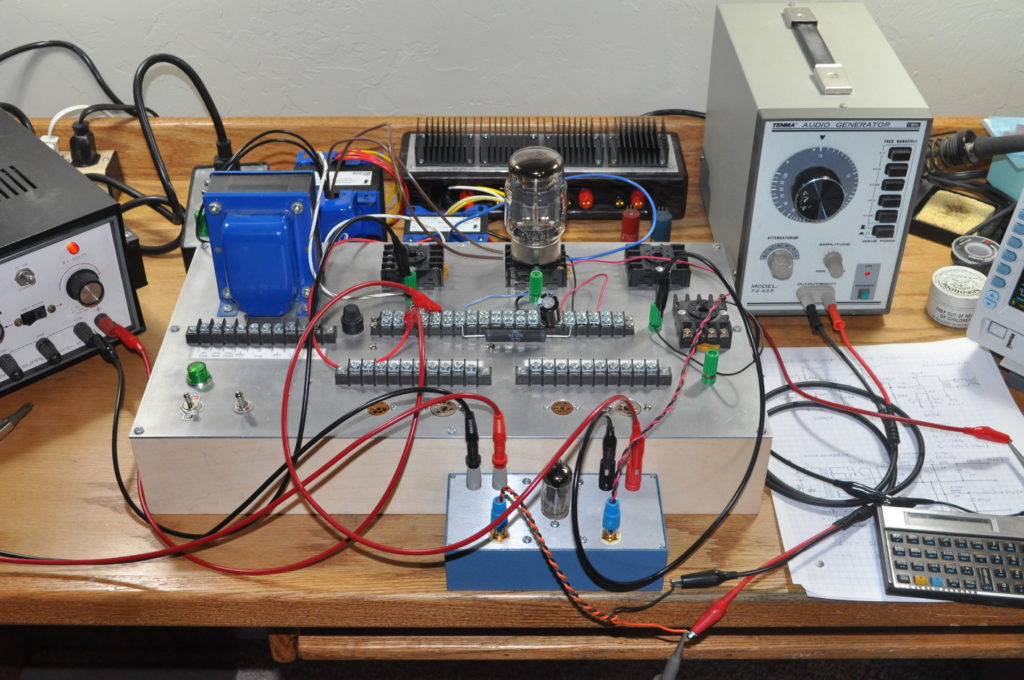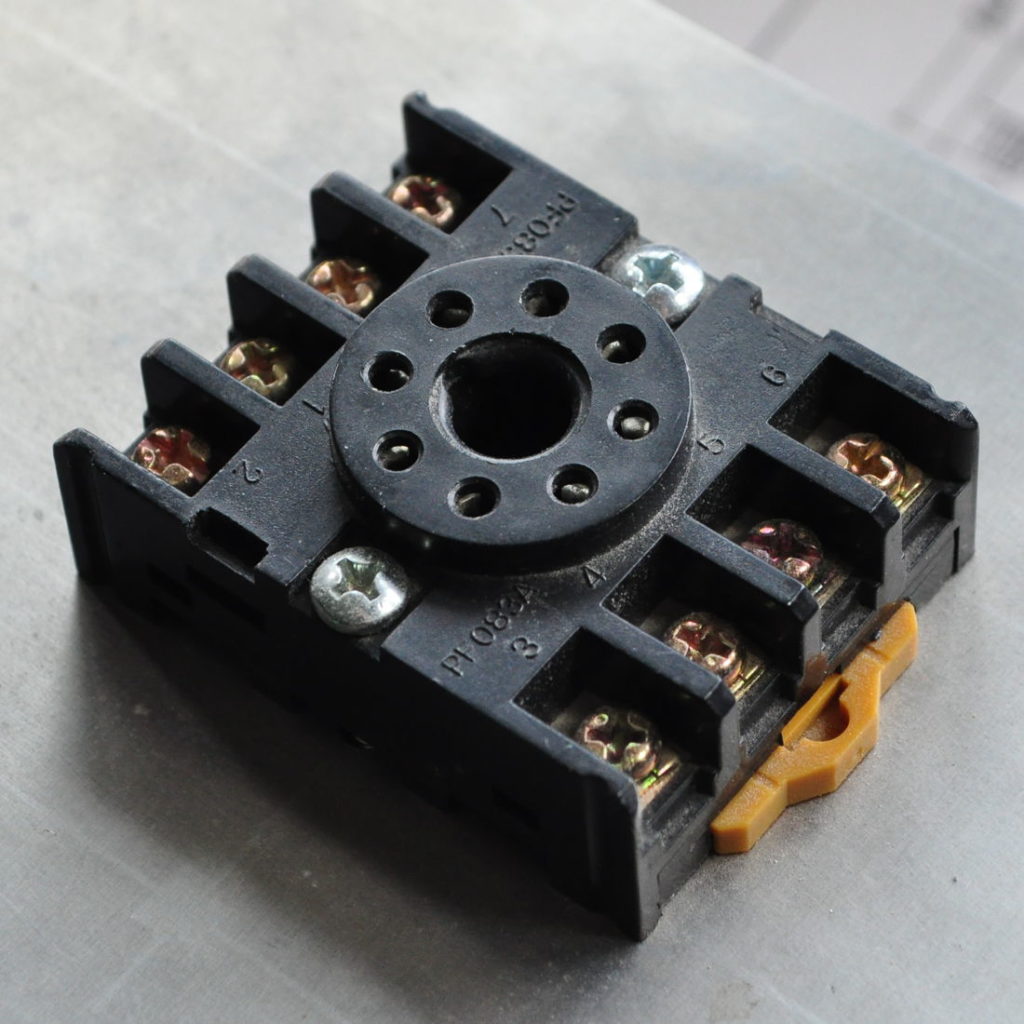So I was sitting down today to prototype a new 6SN7 preamp with a buffered output. As I was getting equipment arranged and pulling components I looked over at my dedicated prototyping station and something didn’t look right. As I looked more closely something jumped out at me that was unexpected and frankly, more than a little surprising.
For those that have been following me a while, you’ll remember some work I did back in early 2016 prototyping the 6336 SET amp. Here is a picture of the prototype setup on my workbench in early January of that year.
You’ll note the big dual triode in the center socket of my prototyping station. This prototyping session probably lasted several hours as I was taking measurements and characterizing the amplifier chain. And during that time, the big triode was dissipating in the neighborhood of 55W (31.5W for the filament plus 23.5W for one active plate). Needless to say the big triode got pretty hot. Now that didn’t bother me much because we all know tubes get hot and it’s not a big deal.
Now since that time I’ve used the prototyping station a couple of times but only for 9-pin tubes; no octals. And today I was getting ready to use a 6SN7 so I was choosing a socket to use. And that’s when I saw it.
Here are two pictures. The first is of the socket on the right hand side of the back row. 
These are industrial sockets made for industrial control relays with eight pins. They are designed for both high voltages and high currents. This is what a typical socket should look like.
Now here is the socket which I used for the 6336 prototyping. 
You should be able to see the difference. This socket is actually melted on the top where it was in contact with the tube base. I just tried to insert a tube into this socket and it wouldn’t go. Even though these sockets are designed for high voltage and high current, they clearly are NOT designed for high temperature. This needs to be replaced.
The lesson here is that just because it fits (i.e. the octal tube into the modern relay socket) doesn’t mean that the plastic used in the modern socket is suitable for tubes. Especially those that get hot. I have a replacement that I can install in short order, but now I’ll have to think twice when testing high power tubes in this setup. This is a clear case of “live and learn”.
Thoughts?

like your sharing
Added comment after seeing your tweet about the damaged socket. Typical control relay coil dissipation is about 1.5 watts.
Contact dissipation is a watt or less per pole at full rated current. A DPDT octal relay would be dissipating less than 4 watts under “maximum” conditions. Under “normal” conditions about 2 watts total.
Hmmm… Designed for 4 W but I used them for 55W; a 1275% overload. I guess I should have expected a little melting. 🙂
Actually those are relay sockets. I use them a lot in my work.
Typically rated 250VAC 10A 50C
Voltages and temperatures encountered in tube circuits (especially power tubes) might be a little much for them.